#swordfightingskills
Photo
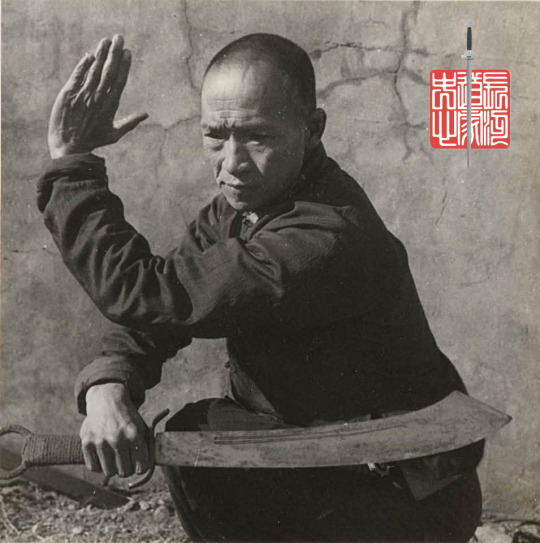
Swordsman wielding a Dadao
Beijing circa 1930s
Photo by Hedda Morrison
#swordsman#historicalswordsmanship#chineseswordsmanship#swordsmanship#chineseswordfighting#swordfightingskills#swordfightingschool#swordfighting#duanbing#chineseswordplay#swordplay#chineseswordwork#swordwork#chineseswordarts#daoistswordarts#swordarts#chineseswordart#chinesemartialarts#chinesemartialart#刀法#daofa#中國刀法#chineseswords#chinesesword#chineseswordman#kungfuweapons
90 notes
·
View notes
Text
An assassination with Muichiro

AU: You and Muichiro are sent on a mission to kill the queen—can you two carry it out?
As the moon cast its pale glow over the ancient castle, Muichiro and you stood side by side, cloaked in the darkness of night. Dressed in your sleek, all-black assassin attire with matching hoods and masks to conceal your faces, you prepared to embark on a mission to bring down a corrupt queen.
"Alright, ___," Muichiro began, his voice calm and composed, "we need to devise a plan to infiltrate and eliminate the queen. We can't afford any mistakes."
You narrowed your eyes beneath your mask, the tension between you two palpable. "I've studied the castle layout extensively," you replied, your voice firm. "I suggest we take the eastern corridor, where the guards are less vigilant."
Muichiro tilted his head, a hint of skepticism in his eyes. "Hm, I believe the western corridor would be a better option. The guards there may be more alert, but it offers a quicker route to the queen’s chambers."
A smirk tugged at your lips. "Quicker, yes, but also riskier. The eastern corridor has fewer patrols and a hidden passage that leads straight to the queen's quarters."
Muichiro crossed his arms, a playful glint in his azure eyes. "If we encounter any guards along the way, I trust you can handle them?"
You raised an eyebrow, matching his confident demeanor. "Of course. But don't forget, Muichiro, I've seen you fight. Your swordsmanship is impressive, but I'd hate for you to slow me down."
A mischievous grin spread across Muichiro's face. "Oh, is that a challenge? We'll see who can clear the path faster, ___."
With a silent nod, the two of you moved in sync, seamlessly navigating through the castle's labyrinthine corridors. Each step was calculated, and every decision was made with precision.
As you neared the hidden passage, a group of guards blocked your path. Without missing a beat, you sprang into action, your agile movements leaving the guards disarmed and incapacitated in mere moments.
Muichiro observed your skill with a mixture of admiration and amusement. "Impressive, ___," he remarked, his tone carrying a hint of awe. "You certainly live up to your reputation."
You smirked, relishing in his acknowledgment. "Told you I could handle it. Now, let's continue."
Together, you pressed forward, your senses sharp and instincts honed. The air was thick with tension as you approached the queen's chambers, the final destination of your mission.
Muichiro unsheathed his sword, his grip steady and resolute. "This is it, ___," he murmured, his voice low but filled with determination. "Stay focused, and we'll end this tyrant's reign."
As you stepped into the queen's chambers, the atmosphere crackled with anticipation. The queen turned, her eyes widening in disbelief as she realized the threat before her.
With a single swift motion, Muichiro lunged forward, his blade slicing through the air with deadly precision. The clash of steel echoed through the room as you engaged the queen's guards, skillfully dispatching them one by one.
Finally, the room fell silent, save for the heavy breathing of the defeated queen. Muichiro's sword rested against the queen's throat, his eyes cold and unyielding.
"Your reign ends here," Muichiro declared, his voice carrying a mix of triumph and justice. "May your sins be forgotten, buried within the shadows of your demise."
You watched as the queen's eyes filled with fear and realization, her grip on power slipping away. Justice had been served, and the queendom would now breathe freely.
As you and Muichiro sheathed your weapons, the weight of your accomplishment settled upon you. The mission was successful, and your partnership had proven formidable.
Muichiro turned to you, a faint smile playing at his lips. "Well, ___," he said, his voice tinged with pride, "we make quite the deadly duo, don't we?"
You chuckled, your heart pounding with adrenaline. "Indeed we do, Muichiro. It seems we're a force to be reckoned with."
With a shared sense of accomplishment, you both disappeared into the night, leaving behind the echoes of a fallen queen and a queendom reborn.
#muichiro tokito#muichiro x reader#muichiro x you#AssassinLoveStory#DeadlyRomance#AssassinsInLove#MuichiroTokitoXReader#AssassinMission#UndercoverLovers#DarkAlliance#InfiltrationTactics#DeadlyDuo#QueenAssassination#SwordfightingSkills#LethalPartnership#IntenseChemistry#MasksAndShadows#AssassinAdventure#DoubleAssassins#RoyalTarget#ForbiddenLove#DangerousMissions#HiddenAssassins#InevitableConsequences#DeadlyAttraction#AssassinSkills#ThrillingEncounters#InescapableFate#LoveAmongShadows#TangledFates
37 notes
·
View notes
Note
What’s their ideal vacation?
Mar would wither away in a Vacation, since she is too highstrung to just relax.
The Halforc is a grafter, so accordingly a vacation is nothing she would chose to do, since she always needs something to do or her mind would wander to places she really would not like it to wander to. Therefor, when she is not in the service of a client, she would use her free days to sit down and either spend the next week baking bread, training her swordfightingskills, pickling vegetables,drying fruits or fish to prepare for her next travel, or she would tuft her clothes or knit herself a little supplies of socks. Mar is not only restless by nature, for even if her body is still her mind always works, but in her head someone like her needs to be useful and when one is not useful one- especially someone liker her- has no right to be there. So just going on a vacation is nothing she would ever do. Accordingly the closest thing to her having a vacation is sitting outside in the springsun with her naalbinding set in use, knitting socks, scarfs and hats, while she reads a slushy romancenovella.
#headcanon#Mar does not simply takes vacations#she would wither away without beeing able to work#thanks for the ask :D
1 note
·
View note
Text
Twilight Jianfa!
After training 3 days at Rodell Laoshi’s St. Paul Seminars, they wanted to test their sword skills. So out they went to the local plaza for some friendly bouting.
Seen on the left is Richard Son Su Meyer, director of Great River Taoist Center Twin Cities. And on the right is Quinatzin De La Torre. Both are long time students of Rodell Laoshi.
Note that both have years of experience in full contact swordplay and are able to control the power of their blows, even at full speed. Less experienced practitioners must don proper swordplay armor, particularly head and eye protection, when bouting.
#jianfa#chineseswordsmanship#jianshu#chineseswordfighting#chineseswordplay#chinesemartialarts#scottmrodell#duanbing#chinesemartialart#swordplay#taijijian#taichisword#yangjiamichuantaijijian#taijiswordfencing#chineseswordfencing#kungfuweapons#swordfightingclasses#swordfightingskills#swordfightingschool#daoistswordarts#daoistswordart#chinesesword#swordarts#swordfight#swordfighter#wudangsword#chineseswordwork#wudangjian#fullcontact#ukchineseswordfighting
11 notes
·
View notes
Photo
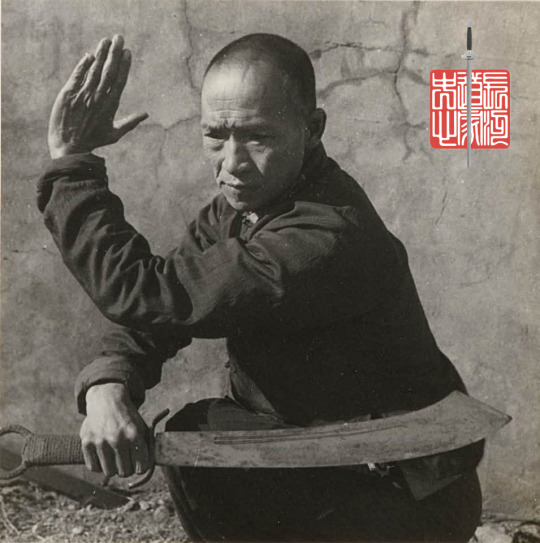
Swordsman wielding a Dadao
Beijing circa 1930s
Photo by Hedda Morrison
#dadao#dadaodui#chineseswordsmanship#historicalswordsmanship#swordsmanship#chineseswordfighting#swordfightingskills#swordfightingschool#swordfighting#chineseswordplay#swordplay#duanbing#chineseswordwork#swordwork#swords#sword#chineseswordarts#swordarts#swordart#chineseswordart#chinesemartialarts#chinesemartialart#swordfighter#swordtraining#中國刀法#刀法#kungfuweapons
30 notes
·
View notes
Text
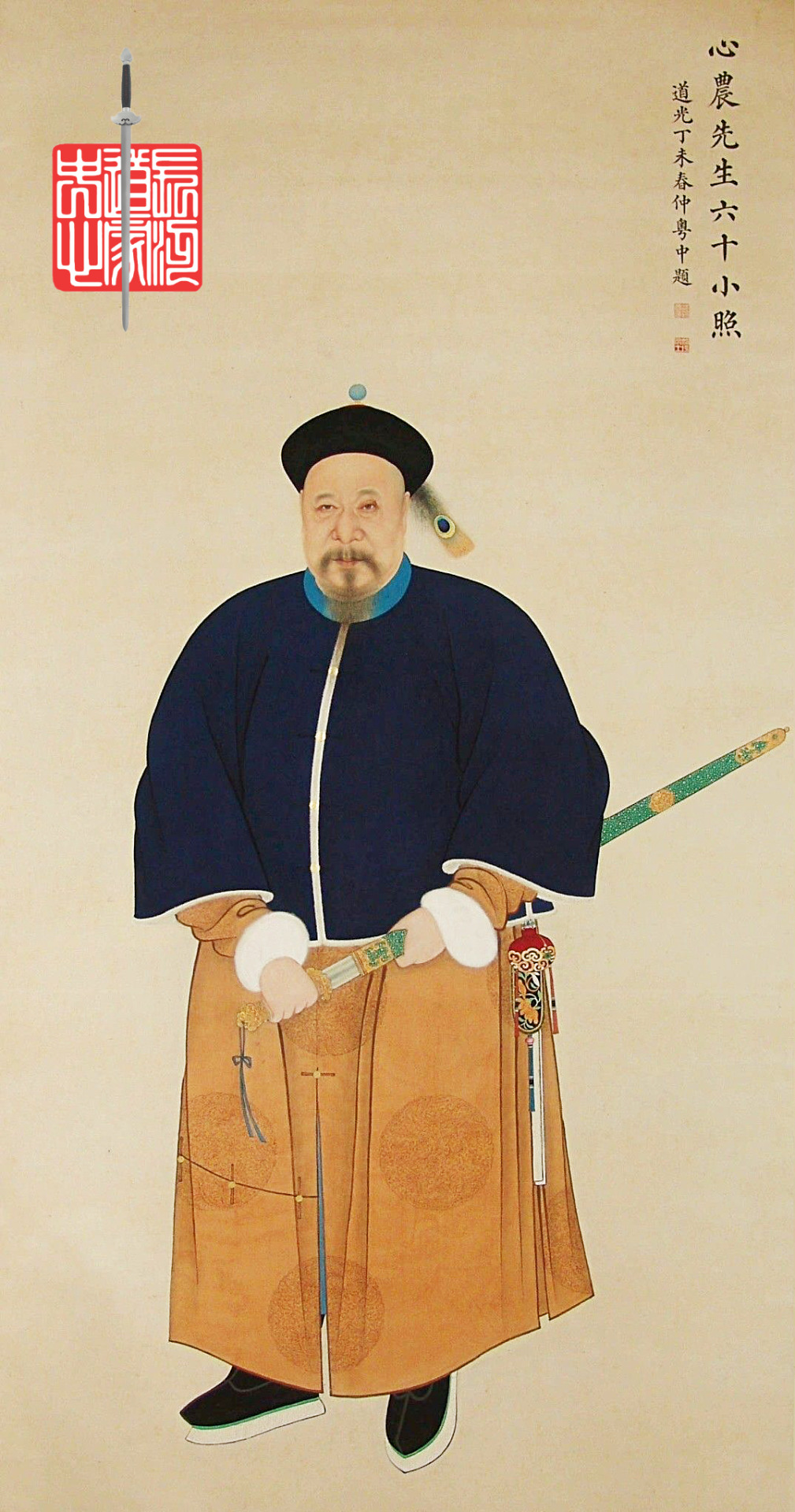

Qing Period images of Bannermen drawing their swords are rare, so I was quite please to uncover this portrait of one unsheathing his Jian.
Comparing what we see here with other Qing Period paintings, we should note several consistent details-
When Drawing a Jian, the left hand typically grasps the scabbard near to, or at, the scabbard throat.
The upward draw into a Liao Cut appears to be the favored draw. This upward Liao can be angled to intercept a cut or initiate an advance.
Jian were often slung from a belt by cloth lanyards, however, it appears that in most cases Jianke preferred to carry the sword in the left free from any restraints a lanyard might impose.
While these details of technique and carry are those commonly depicted, we should also keep in mind that these might have also been a matter of artistic convention of the time.
#chinesemartialart#jianfa#chineseswordsmanship#jianshu#chineseswordfighting#scottmrodell#duanbing#chineseswordplay#swordplay#chinesemartialarts#zhongguojianfa#historicalswordsmanship#swordfightingschool#swordfightingskills#swordfightingclasses#swordfighting#chineseswordwork#swordwork#daoistswordarts#daoistsword#taijijian#taijiswordfencing#taijisword#taichisword#劍術#劍法#中國劍法#太極劍#chineseswordarts#chineseswordart
7 notes
·
View notes
Text

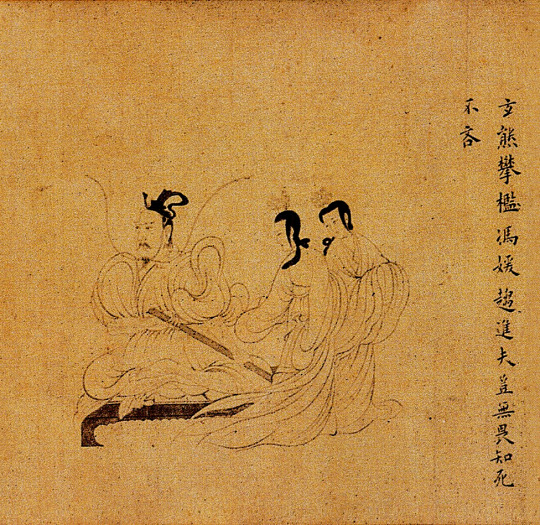

The history of the Chinese Fast Sword Draw (出劍法) dates back to the Han dynasty, 2,000 plus years ago. Unfortunately, there are no known manuals for these techniques and historically illustrations are rare. This depiction of a seated swordsman drawing his sword is from a scroll originally painted by Gu Kaizhi ( 顧愷之) in the 4th century. While Gu’s original version of this scroll, The Admonitions of the Instructress to the Court Ladies (女史箴圖) has not survived, later copies of this work have.
The two following later copies of this scroll date to the Tang (dated between the 6th and 8th century AD) and Song dynasties. As such they are likely the oldest known illustrations of a Chinese Swordsman Preforming the Fast Sword Draw (出劍法). They are also the only know depiction of a seated Chinese sword drawn know to date. Given the age of the two paintings, it is difficult to make out the finer details. What we can see is that seated swordsman’s grip is palm out with his fingers wrapping over the grip prepared to draw and strike downward. His rear hand is well back toward the rear of the scabbard, palm down.
A skeptic might understandable suggest that the seated figure is actually wielding a cudgel. Given the lack of visible detail, this would be an understandable suggestion. However, there is no reason for a wooden club to be gripped at the rear end just prior to swinging it. And given that what appears to be bear is just before the seated man, if it were some sort of cudgel and not a sword ready to be drawn, it is more likely he would be gripping it with two hands not holding the the rear end palm down.
Note: the Tang period example of The Admonitions of the Instructress to the Court Ladies is in the collection of the British Museum in London. The Song period (960-1279) example is the property of the Palace Museum in Beijing.
#出劍法#chineseswordsmanship#jianfa#chineseswordfighting#chineseswordplay#scottmrodell#chinesemartialarts#duanbing#chineseswordsman#chineseswordarts#daoistswordarts#swordfighting#chineseswordfencing#taijiswordfencing#swordfightingskills#kungfuweapons#iaido#scottrodell#testcutting#jianshu#chineseswordart#swordarts#swordsmanship#historicalswordsmanship#swordplay#chinesesword#chineseswords#daofa
6 notes
·
View notes
Photo
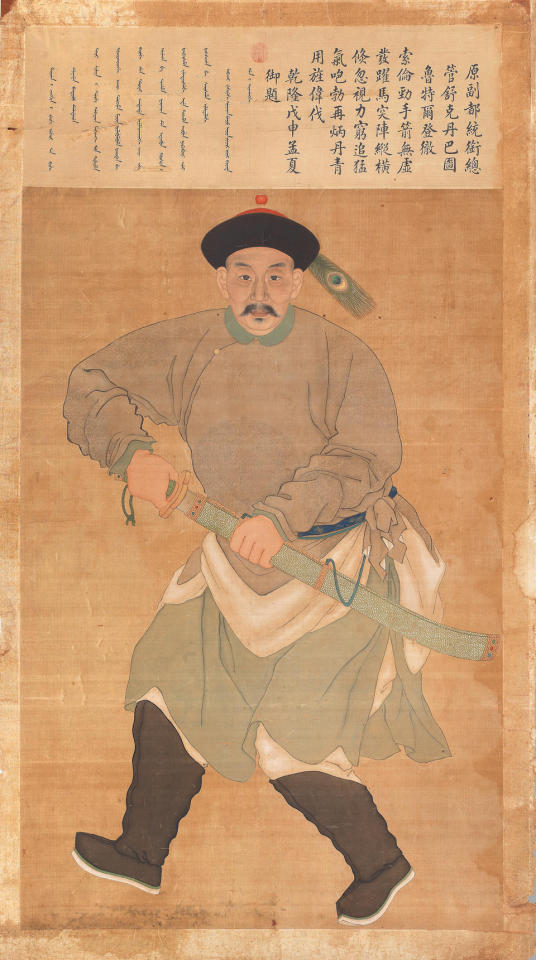

Bannerman Drawing his Saber
What is quite interesting about this painting is how the Sword Drawing technique it depicts is consistent with what we have seen before. Note for example, the position of the hand on the scabbard as he draws. It is not at the scabbard throat, but grasped midway along the suspension band. A detail seen in all other illustrations where a Dao (saber) is being draw. Also note that he is drawing with the edge down. Another apparently standard element of the Chinese Quick Sword Draw.
It is also refreshing to see just how Qing swordsmen dressed. Not in the flamboyant colors often worn by martial artists at tournaments today. But in muted grey, functional and not ostentatious.
For more about this painting of BANNERMAN TE'ER DENG CHE, see Bonham’s Auction Website-
https://www.bonhams.com/auction/27991/lot/128/a-rare-and-important-imperial-court-painting-of-the-bannerman-teer-deng-che-qianlong-dated-by-inscription-to-the-wushen-year-corresponding-to-1788-and-of-the-period/
And for a tutorial on Chinese Fast Sword Drawing, see my video on YouTube-
https://youtu.be/6AVk8PQjh2o
#chineseswordsmanship#chineseswordfighting#chineseswordplay#swordplay#chineseswordwork#swordwork#duanbing#swords#sword#daoistswordarts#chineseswordart#swordarts#swordart#taijiswordfencing#chinesemartialarts#chinesemartialart#swordfighter#swordtraining#swordfightingschool#swordfightingskills#中國刀法#刀法#kungfuweapons#出手法
9 notes
·
View notes
Text
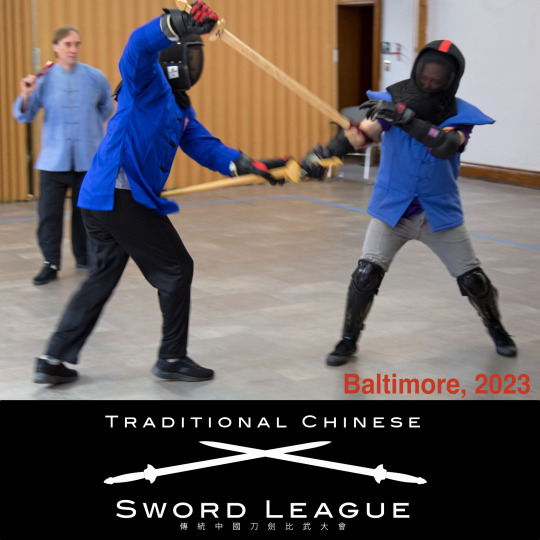
Full Contact Chinese Swordplay Tournament
Baltimore, 2023
No reason why you can’t close and use your empty hand to control your Duifang’s weapon.
A solid blow to the head or worse counts as a “killing blow” and ends the bout.
#jianfa#chineseswordsmanship#chineseswordfighting#chineseswordplay#duanbing#chinesemartialarts#chinesemartialart#swordplay#zhongguojianfa#ukchineseswordfighting#swordsmanship#historicalswordsmanship#swordfightingschool#swordfightingskills#swordfightingclasses#swordfighting#swordwork#chineseswordwork
5 notes
·
View notes
Text

We Need Your Input!
Hey everyone! We're reaching out to our current and potential students about Chinese swordsmanship. We want to make our classes and resources better for you.
What's Stopping You?
What are the main obstacles or issues you're facing in learning Chinese swordsmanship? Is it finding time, understanding the techniques, or something else? Let us know in the comments.
Your Feedback Matters
Your feedback is crucial. It helps us understand what you need and how we can improve. So, please, take a moment to tell us about your challenges.
Join the Conversation
If you haven't joined us yet, this is your chance to be part of a community that's all about learning and growing in Chinese swordsmanship. We're here to help each other. Join the Practical Chinese Swordsmanship Facebook group: https://www.facebook.com/groups/chineseswordacademy
Thanks for helping us make the Academy of Chinese Swordsmanship the best place to learn and practice this art.
#chineseswordfighting#chineseswordsmanship#jianfa#duanbing#chinesemartialarts#chineseswordplay#jianshu#scottmrodell#chinesemartialart#chineseswordarts#daoistswordarts#daoistswordsman#swordfightingschool#swordfightingskills#swordfightingclasses#scottrodell#ukchineseswordfighting#chineseswordwork#taijijian#taijiswordfencing#taijisword#taichisword#wudangsword#wudangjian#楊家秘傳太極劍#kungfuweapons#yangstyletaichichuan#yangstyletaichi#太極劍#taijifencing
2 notes
·
View notes
Text
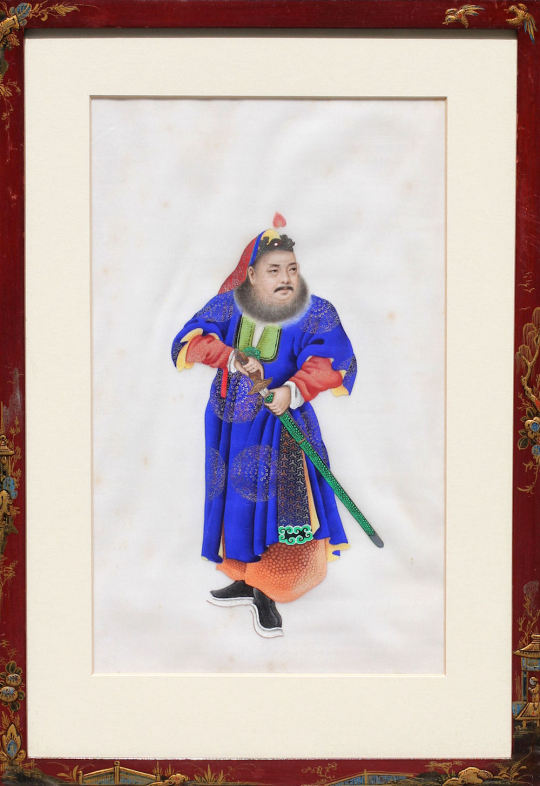
19th Pith Painting of a Jianke in Archaic Clothing
Drawing his Sword-
Another example of a Jianke (swordsman) drawing his jian. As we’ve seen in several other period images, his left hand is positioned at the throat of the scabbard as he draws for a downward cut. These pith paintings were produced in large numbers, this is not a page from a sword manual. So we should be cautious about drawing too many conclusions from it. It is interesting however to note that in multiple period images where a jian is being drawn, the left hand is showed at the top of the scabbard. Drawing of the dao are sometimes also depicted in this fashion, but more often with the left hand further down the scabbard at the suspension band.
I am also pleased to see the shape of the guard is quite similar to my Cutting Jian Hanwei forges.
#chineseswordsmanship#jianfa#chineseswordfighting#chineseswordplay#jianshu#chinesemartialarts#duanbing#chinesemartialart#zhongguojianfa#historicalswordsmanship#swordfightingschool#swordfightingskills#swordfightingclasses#swordfighting#chineseswordwork#swordwork#chineseswordarts#daoistswordarts#taijijian#taijiswordfencing#taijisword#taichisword#wudangjian#wudangsword#swordclasses#中國劍法#chinesefastdraw#劍法#swordfighter#太極劍
3 notes
·
View notes
Photo

Chinese Swords Deflection, Edge Parries or Blade Flat? What do the Antique Swords Tell Us?
Setting theory aside, I've been quite fortunate to handle literally thousands of antique Chinese Swords. I did this as a dealer, owning and reselling over 600 pieces, visiting major private collections (when you are dealing, people you sell to will invite you to see their collections, and traveling to examine museum reserve collections. For example, I've handled everything in the reserve collections of the State Historical Museum in Moscow, and the Met's in New York.
One thing that is quite clear from examining the large sample of Qing and Ming period swords is that there is a distinct lack of edge damage. Certainly, all acknowledge that is would and did happen in life and death encounters. But there is no evidence that edge parrying was common or the standard. Quite the opposite in fact, one finds cuts on the blade flat, and few serious edge nicks, certainly not exhibiting the depth or the sort of damage the test show result from edge parrying.
Concerning museum collections, it can be argued that they represent a sort of “survivor’s bias.” That is, those pieces persevered in these collections are the better pieces, often those made for the upper class and ranks. Some of swords displayed in museums never saw any combat use. This is a valid and important point. However, this is not generally the case with museum reserve collections. This is wear the swords not “nice” enough for display are housed for study. Here one can counter the “user” swords. The same is true of private collections. And a very large proportion of the weapons I handled as an antique dealer were these made for, and put to use, category of swords. Study the whole of the surviving material is what is important when it come to drawing any conclusions. Having done this, as stated above, the evidence overwhelmingly supports the conclusion that edge parries were avoided and that blade felt was standardly employed for deflections.
#zhongguojianfa#juniorjianfa#jianfa#jianshu#scottrodell#scottmrodell#chineseswordsmanship#chineseswordfighting#historicalswordsmanship#swordsmanship#swordfightingskills#swordfightingschool#swordfighting#chineseswordplay#swordplay#duanbing#chineseswordwork#swordwork#swords#sword#chineseswordarts#daoistswordarts#swordarts#swordart#chineseswordart#daoistswordman#daoistsword#swordfighter#yangjiamichuantaijijian#taijijian
13 notes
·
View notes
Photo

Twin Cities Chinese Swordsmanship Seminar March 3-6, '23
Great River Taoist Center Twin Cities
https://grtcmsp.business.site/?utm_source=gmb&utm_medium=referral
#zhongguojianfa#jianfa#jianshu#scottrodell#scottmrodell#chineseswordsmanship#historicalswordsmanship#swordsmanship#chineseswordfighting#swordfightingschool#swordfightingskills#swordfighting#chineseswordplay#swordplay#duanbing#chineseswordwork#swordwork#daoistswordarts#chineseswordart#swordarts#swordart#chineseswordarts#daoistswordsman#daoistsword#yangjiamichuantaijijian#taijijian#wudangjian#taichisword#wudangsword#chinesemartialarts
9 notes
·
View notes
Text
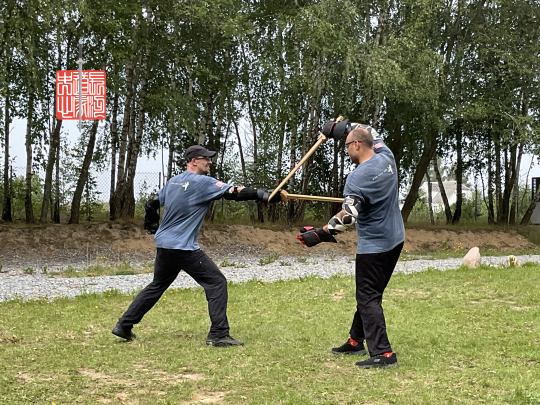
A well timed, perfectly placed Ge Cut delivered by Roland Tepp on the right that intercepts his duifangs cut. Ge Cuts are properly aimed at the sword arm or hand and not the blade. Striking the duifang’s blade often has little result or can even giving the duifang energy to counter-cut with.
Roland Tepp is a long time Apprentice Student at the Academy and runs the Tallinn Branch of the Great River Taoist Center where he teaches.
#jianfa#chineseswordfighting#chineseswordplay#chineseswordsmanship#chinesemartialarts#jianshu#duanbing#chinesemartialart#swordplay#scottmrodell#daoistsword#zhongguojianfa#ukchineseswordfighting#swordsmanship#historicalswordsmanship#swordfightingschool#swordfightingskills#swordfightingclasses#swordfighting#chineseswordwork#swordwork#chineseswordarts#daoistswordarts#taijifencing
4 notes
·
View notes
Photo
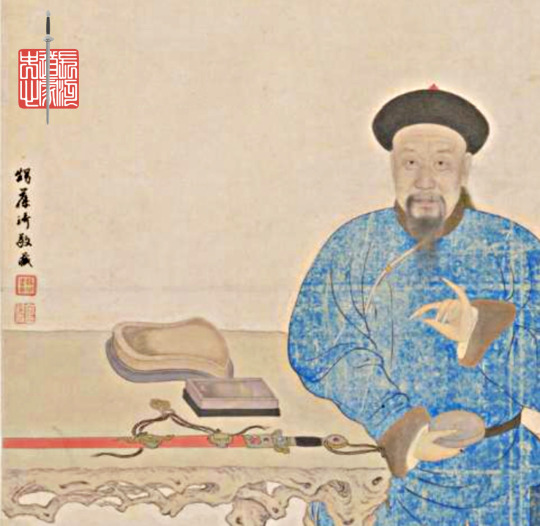


Manchu Scholar with his Sword and Ink Stones, the perfect example of the Sword and Brush as One~
As depicted in "Tie Bao Xiang,《铁保像》" Qing Dynasty, painted by Ding Yicheng
Described by the Palace Museum as a Sitting Portrait of Tie Bao, a famous calligrapher in the Qing Dynasty. Tie Bao wears a blue robe and black shoes, a crown hat on his head, his left hand is naturally bent in the shape of a beard, his right arm is leaning on the table, holding an inkstone tile, his face is dignified, and his eyes are full of spirit. On the wooden table on the right side of the figure, there are two inkstone tiles and a sword.
This work still retains the traditional composition method of the Bochen School, focusing on the characters, with appropriate background scenery to highlight the protagonist's identity and personality characteristics. In the picture, it is very appropriate to use inkstone and sword to express the character of a Manchu official and calligrapher.
See:https://www.dpm.org.cn/collection/paint/228821.html?hl=%E7%A0%9A
This interesting jian is a "Longquan (Dragon Well) Style. For a Similar Example, See- Duanjian, the Chinese Short Sword- Chinese Swords and Swordsmanship Series on YouTube- https://www.youtube.com/watch?v=awmdezzqa7U&t=363s
#zhongguojianfa#jianfa#jianshu#chineseswordsmanship#historicalswordsmanship#swordsmanship#chineseswordfighting#swordfightingskills#ukchineseswordfighting#swordfighting#chineseswordplay#swordplay#duanbing#chineseswordwork#swordwork#swords#sword#daoistswordarts#chineseswordart#swordarts#swordart#daoistsword#manchu#bannerman#qingdynasty#qingbannerman#taijijian#daoistswordsman#taijiswordfencing#taijisword
6 notes
·
View notes
Text

Republican era artwork -- Shi Jin deflects a flying rope dart.
#rope dart#chineseswordsmanship#chineseswordfighting#chineseswordplay#chinesemartialarts#duanbing#swordplay#chinesemartialart#swordfight#swordfightingskills#swordfightingclasses#swordfighting#swordfightingschool#daofa#chinesesaber#chinesesword#chineseswordarts#kungfuweapons#qingdynasty#flyingdart#chineseswordfencing
2 notes
·
View notes